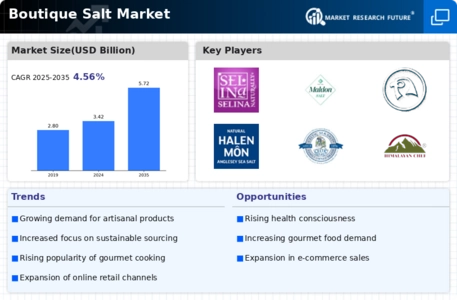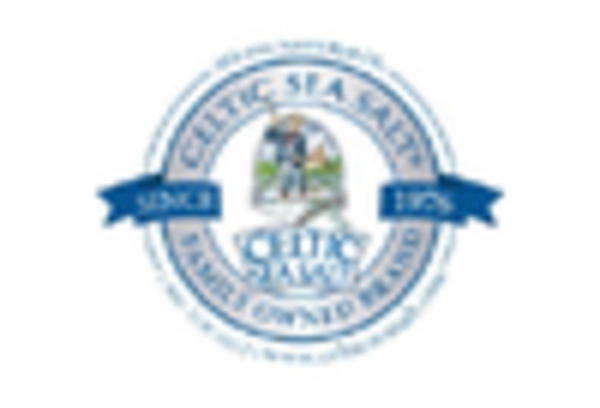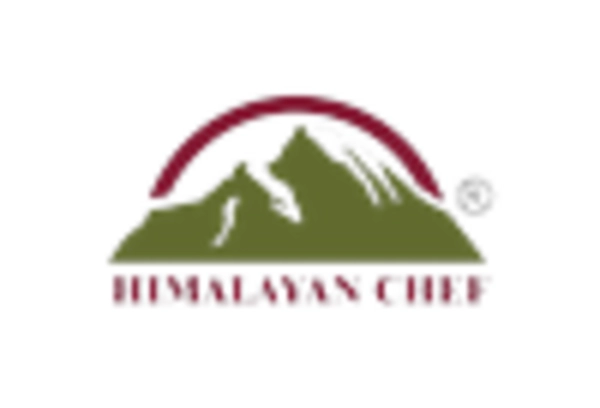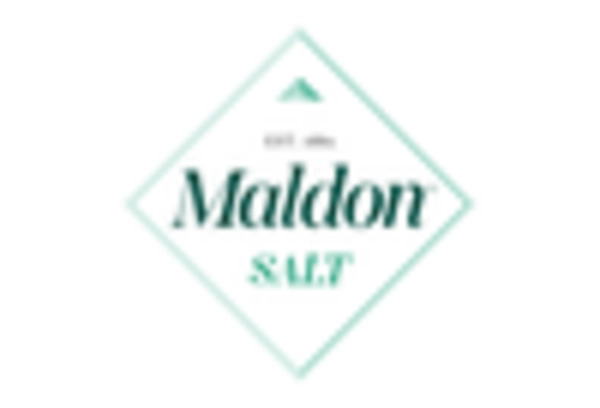Health and Wellness Trends
The rising awareness of health and wellness among consumers appears to be a pivotal driver for the Boutique Salt Market. As individuals increasingly seek natural and unrefined products, boutique salts, often rich in minerals and trace elements, are gaining traction. This trend is reflected in market data, indicating that the demand for gourmet and specialty salts has surged, with a notable increase in sales of Himalayan pink salt and sea salts. Consumers are gravitating towards products that not only enhance flavor but also offer perceived health benefits. The Boutique Salt Market is thus positioned to capitalize on this trend, as more people incorporate these salts into their diets, viewing them as healthier alternatives to conventional table salt.
Sustainability and Ethical Sourcing
Sustainability concerns are becoming increasingly relevant in the Boutique Salt Market. Consumers are more inclined to support brands that prioritize ethical sourcing and environmentally friendly practices. This shift is prompting producers to adopt sustainable harvesting methods, particularly for sea salts, which can have significant ecological impacts. Market data suggests that consumers are willing to pay a premium for products that align with their values, indicating a potential growth area for boutique salt brands that emphasize sustainability. As awareness of environmental issues continues to rise, the Boutique Salt Market may see a shift towards more responsible sourcing practices, appealing to a conscientious consumer base.
Culinary Innovation and Gourmet Trends
Culinary innovation plays a significant role in shaping the Boutique Salt Market. Chefs and home cooks alike are increasingly experimenting with unique flavors and textures, leading to a heightened interest in specialty salts. The market has seen a proliferation of flavored salts, such as truffle salt and smoked salt, which are being utilized to elevate dishes and create distinctive culinary experiences. This trend is supported by data showing that gourmet food sales have been on the rise, with consumers willing to invest in high-quality ingredients. As the culinary landscape continues to evolve, the Boutique Salt Market is likely to benefit from the ongoing demand for innovative and artisanal products that cater to discerning palates.
Cultural Influences and Global Flavors
Cultural influences are significantly shaping consumer preferences within the Boutique Salt Market. As globalization facilitates the exchange of culinary traditions, consumers are increasingly exploring diverse flavors from around the world. This trend is evident in the rising popularity of salts infused with regional spices and herbs, reflecting a desire for authentic and unique taste experiences. Market data indicates that consumers are more adventurous in their culinary choices, seeking out products that offer a taste of different cultures. Consequently, the Boutique Salt Market is poised to thrive as it embraces this cultural diversity, providing a platform for innovative flavor combinations that resonate with a global audience.
E-commerce and Direct-to-Consumer Sales
The expansion of e-commerce platforms is transforming the retail landscape for the Boutique Salt Market. With the increasing prevalence of online shopping, consumers are now able to access a wider variety of boutique salts than ever before. This shift is supported by data indicating that online sales of specialty foods, including boutique salts, have experienced substantial growth. Retailers are leveraging digital marketing strategies to reach niche markets, allowing them to connect directly with consumers. As e-commerce continues to evolve, the Boutique Salt Market is likely to benefit from enhanced visibility and accessibility, enabling brands to cater to a broader audience and drive sales.


















Leave a Comment